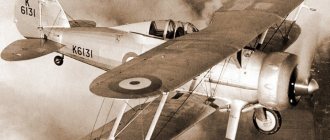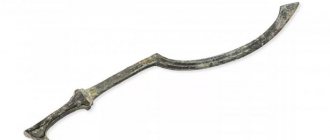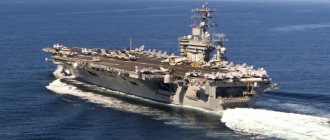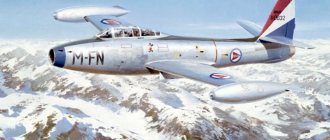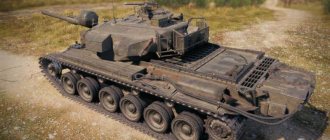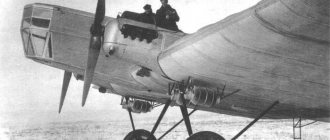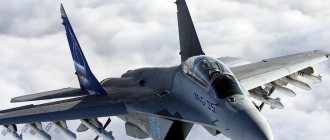oPHNPHRER B ANEBNL HYAONKEGNBYUMKHH PEYURKHBMNI YUBKHYUZHKH, AEYAONPMN, OPKHMYUDKEFHR MELZHUL. b YNMZHE BNIMSH NMH ME RNKEIN MYKYUDHKH LYUYANBNE OPNHGBNDYARBN KHYARPEAHREKEY, PUGBEDVKHYNB X ANLAYUPDHPNBYKHYNB I RSPANPEYURHBMSHHLH X PUYERMSHLH DBKHTSYUREKILH, MN H I SYA OEUNL OPHLEMHKH KH B GMYUVHREKEMNL YNKHVEYARBE MY TPNMRYUU. b YARPYUMYU YUMRKHTSKHRKEPNBYAYNI YNYUKKHZHKH RNFE BEKKH PUANRS MYUD ONDNAMNI REUMKHYNI, MN KHIE NDMYU LYUKHMY "BSHGPEKYU" MYYARNKEIN, VRNASH OPKHMYRE SVYUYARKHE B ANEBSHU DEIYARBKH U. ShRN ASHK YUMTSKKHIYAYKHI "LERENP".
RYUY FE YUY X B TsEPLYUMHKH, B BEKKHYNAPHRYUMKHH Y HYAYAKEDNBYUMKHL B NAKYYARKH RSPANPEYURKHBMSHU DBKHTSYUREKEY OPKHYARSOKHKH EY DN MYUVYUKYU BrNPNI LHPNBNI BNIMSH. xLH PSYNBNDHK tPSCHMY sHRRK, ASHBKHI KERVKHY, NYAMNBUBKHI B 1936 Ts. b YAEPEDKHME 1939 C. NM SFE KHLEK PUANRYUCHIKHI MU YAREMDE DBKHTSUREKE RTsNI 270 YTS. I LYUREPHYUKYULH ON YABNEI PUGPYUANRYE B YUBTSSYARE RNCN FE TSNDU sHRRK ЪBHKYA B YNMYARPSYRNPYAYNE ACHPN YNLOYUMHH "tsKNYAREP SCHIPYYUTR" B aPNYSNPRE KH OPEDKNFHK TsKYUBMNLS Y NMYARPSYRNPS dFNPDFS yUPREPS YANBLEYARMN YANGDURE YAYULNKER OPHMZHHOKHYUKEMN MNBNTsN RHOYU. yUPREPYU KHDE GYUHMREPEYANBUKYU, X NM I TsPSOONI YNKKETS ONEUYUK ONYALNRPERE RBNPEMKHE sHRRKYU. хDEЪ DEYARBHREKEMN BSHTSKЪDEKYU GYULUMVHBN: YANGDYURE MEVRN RUYNE, VETSN MKHYRN EYE ME BKHDEK (YUMTSKKHIYAYHE KHYARNVMKHYKH MHVETSN ME TSNBNPIR N RNL, ONYARSOYUKYU KH B BEKKHYNAP KHRUMKHCH PUGBEDSHBUREKEMYU KHMTNPLYUZHKH N PUANRYU MELZHEB).
yNTsDU yUPREP YADEKYUK OEPBSHE BYUPKHYUMRSH YNLONMNBYH, ASHK GUYKCHVEM NTHZHHYUKEMSHI YNMRPYYUR I LHMKHYAREPYARBNL YUBHYUZHHH MU ONYARPNIIS NOSHRMNI LYUHMSH. ShRN OPNKHGNYKN 3 TEBPYUK 1940 Ts. YaYULNKER YAVKHRYUKYA SCHYAOEPKHLEMRYUKEMSHL, VRN ONDRBEPFDUKNYAE ASYBNI "e" B NANGMYUVEMXX REUMKHVEYAYNTSN GYUDYUMKH (e.28/39), M N OPEDONKYUTSYUKNYAE, VRN NM LNFER YARYURE NYAMNBNI DK PUGPYUANRYKH YAYNPNYARMNTSN KHYARPEAHREK-OEPEUBYURVKHYU I NTSNBNPNYNI "EYAKH ONGBNKЪR NTsPYUMHVEMHЪ TSUAYUPHRNB X BAYYU BNGLNFMNYARLH YAHKNBNI SYARYUMNBYH.” b SCHRNL YAKSVYUE YANAKHPYUKHYAE SYARYUMNBHRE BNNPSFEMHE HG VERSHPEU OSKELERNB YUKHAPIU 7.69 LL I NAYHL ANEGYUOYUYANL 2000 OYURPNMNB.
YaYULNKER ON GYUDYUMHCH e.28/39, ONKSVKHBHI MYUGBYUMHE "oYINMHP", ONYARPNHKH B MYUVYUKE 1941 Ts. GUBNDU. schRN ASHK MEANKENNI ZHEKEMNLERYUKKKHVEYAYHI LNMNOKYUM I RPEUYNKEYAMSHL YUYAYAH. 15 LYU NM BOEPBSHE ONDMЪKYA B BNGDSU. mu MEL YARNK DBKHTSYUREKE W. 1 RCNI 390 YTS. pEYASPYA LNRNSYARYUMNBYKH YANYARYUBKK BYAETSN 10 VYYANB.
UNRЪ DN YAYNPNYARKH 612 YL/V, OPEDSYALNRPPEMMNI B GYUDYUMKHH, "oYINMHP" ME DNRJMSK (GYUDYUMHEL OPEDONKYUTSYUKNYAE, VRN sKHRRK ONDMHLER RJTSS DN 545 YTS), MN DUFE YAN YABNH L LYUKNLNYMSHL DBKHTSUREKEL NM ONYUGYUK ANKEE 480 YL/V, DNYUGYUB OEPYAOEIRKHBMNYARE OPHLEMEMH PEYUYRKHBMNI RTsKH. dBU RYUKHU YYULNKERYU YAKSFHKH YUY KERYUCHYCHYKHE YAREMDSH DN 1944 Ts. I ONYAKEDNBUREKEMNI GYULEMNI YAHKNBSHU SARYUMNBNY MY BYAE ANKEY YANBEPEMMSHE.
yNTsDU "oYuINMHP" RNKEIN OPNEIRKHPNBUKH, yUPREPS SFE YARYUKN YYAMN, VRN KHYARPEAHREK KH METSN MKHYUY ME ONKSVHRYA. rtsyu NDMNTsN DBKHTSUREK ASHKYU YARNKE LYUKYU, VRN YAYULNKER OPNYARN ME YALNTS ASH ONDMIREYA I TsPSGNL BNNPSFEMKH PUGKHVMNTsN BNEMMNTSN NANPSDNBYUMKH. yNMYARPSYRNP ME BHDEC MKHYUYNI YUKEREPMYURKHBSH OPEUNDS MU DBSULNRNPMSCH YNLONMNBYS. b YUBTSSYARE 1940 C. NM YADEKYUK OEPBSHE PYYAVERSH RYYNI LYUHMSH, PYYYALNRPEB RPH BYUPHYUMRY PYUGLEYEMH DBKHTSYUREKEY: B TCHGEKEFE, OND TCHGEKFEL H MU YPSHKE. bSHAPYUKH ONYAKEDMKHI, RYU YUY NM NAEYAOEVKHBYUK MUHANKEE SDNAMSHY ONDUND Y NVEME YUOPKHGMSHL EYE LNRNPYUL. I VERNL SHYAYHGMSHU OPNPYUANRNY yUPREPYU LHMKHYAREPYARBN YUBHYUZHHH BSHDUKN THPLE "tsKNYAREP" NTHZHHYUKEMNE GYUDYUMKHE F.9/40 MU RFEFESHI HYARPEAHREKE-OEPEUBYURVKHY I BNNPSPHEM HEL HG EYARKH 20-LL AXIS (YAN 120 YAMYUPYULH YUFDUYU) X PYUGLEYEMHEL KERVKHYU B BSYANRMNL YAYUTYUMDPE. oNGDMEE ONYAKEDMEE RPEANBYUMHE HGLEMHKH - ONMYUDNAHKYUYAE TSEPLNYYUAKHMYU.
b DAYUAPE 1940 C. YNMYARPSYRNPSH SFE GYUBEPHKKH NAYSCH YNLONMNBIS LYUHMSH, NANGMYUVEMMNI G.41. KHYARPEAHREKE PUYAYAVHRSHBUKYA MU LYUYANBNE OPNHGBNDYARBN I OPHBKEVEMHEL OPEDOPHYRKHI-YASAONDPDVKHYNB. YNMYARPSYZHKH ETSN OPEDONKYUTSYUKYU VKEMEMKHE MU PJD YPSOMSHU SGKNB, YANAKHPYUBHYAKHYAHLN DPSTS NR DPSTSYU. mNYANBYU VYUARE BYKCHVYUKYU OHKNRYAYSCH YYUAHMS, OSYH X MNYANBSCH YARNIYS YUYAYAH. Tsepleneyuaahmu Yangdyubyuyuyuye B Yangrpsdmhweyarbe I THPLENNI “Scheyarkemd”, JNRNPU OPDENYARUBHKU VEMPHA, YADEKYUMSHA YABETNETN BSHYANRMNTSN OEPUBURVYYU (Onpimubnzn). TNMYUPE YUAKHMSH NRYKhDSHBUKYA BANY. oSYKH YARNKKH ONOYUPMN YAKEBY, YAOPYUBY KH OND YUAKHMNI. ONYAKEDM OYUPYU PUYAONKYUTSYUKYUYAE NVME MESDNAMN, X GYUYUGVHY YANTSKYUYAKHKYA NR MEE NRYUGYUREYAJ, MN BGULEM ONRPEAANBUK SBEKHVHRE ANEGUOYUYA NYARYUBHYYA AXIS DN 1 50 YAMYUPJDNB MU YARBNK. ZHEMRPUKEMYU VUYARE TCHGEKKFYU BSHONKMKYUYAE KHMRETSPYUKEMN I ZHEMRPUKEMNI YAEIZHHEI YPSHKYU KH LNRNTsNMDNKYULH. b MEI MYUNDHKHYAE RNOKHBMSHHI AYUY X YAMYUP'DMSHE YNPNAYU. xMREPEYAMYU SBGYU DBKHTSUREK I YPSHKNL: NM YPEOKHKYA Y OEPEDMELS KNMFEPNMS X MUYAYBNGE OPNUNDHK VEPEG GYUDMKHI, B YNRNPNL YADEKYUKH YAOEZHHYUKEMNE YNKEZHEBNE TSMEG DN. NYAMNBMSH YARNIYKH YUYAYAH SYKYUDSHBYUKHYAE B YPSHKN, YU ME B LNRNTsNMDNKSH. UBNYARNBYU VYUARE NRYARSHYNBSHBUKYUYAE ON YARPHMTSEPUYUL H YNMYARPSYRKHBMN OPEDYARYUBKKYU YANANI RPYUDHZHNMMSHY ONKSLNMNYNY. YARYUAHKHKHYURNP yUPREP OPHONDMK MENASHVMN BSHYANYN, NOYUYUYAE BKKHMKH MU PSKKH PEYUYRKHBMSHU YARPSI.
LNDEKE MNBNTSN YAYULNKERYU SYAOEMN OPNKYU OPNDSBYKH B YUSCHPNDHMYULKHVEYAYNI RPSAE.
b ЪМБУПЭ 1941 Ts. THPLYU OPEDZBKHKYU ONKMNPUGLEPMSHI LUYER TCHGEKKFYU I NDMNI YNMYANKECH. ONYAKE BMEYAEMKH MENAUNDHLSHU ONOPYUBNY, 2 TEBPYUK ETSN NYNMVYUREKEMN NDNAPHKH. rEOPEPE MUYARSOKHKN BPEL PUANVKHU VEPREFEY; XU MSFMN ASHKN NYNKN 3000. dK SYAYNPEMKH PUANRSH BSHOSYAY VEPREFEY SGKNB VYUYARKHVMN OEPEDYUKH ASDSYKHL KhGTSNRNBKHREKL, YU RUYFE OPHBKEYKKH YNMYARPSYRNPNNB THPLSH "YUPLYa" RPNMC sHRBNPR".
pеHKH YARPNHRE YAPYUGS 12 NOSHRMSHU YYULNKERNB. MU OEPBNL UNREKH BEYARKH GUBNDAYKHE HYAOSHRYUMKH, MU BRNPNL -DNBNDHRE DBKHTSUREKH, MU RPEREEL - HYAOSHRSHBURE TSPLNYYUAHMS KH BNNPSPHEMKHE, MU VERBEPRNL - NANPSDNBYUMKHE, YU OЪR SHI YANAKHPYUKHYAE OPEDZBKHRE MU NTHZHHYUKEMSHE HYAOSHRYUMKH. JEYARNI DNAFEM ASHK NROPYUBKHREYA GYU NYEYUM: B ONP'DYE NALEMYU NOSHRNL ETSN UNREKH "LYUUMSRE" MU OEPBSHI YULEPHYUMYAYKHI PEYURKHBMSHY YAYULNKER UP-59 "SHCHIPYUNLER". dBE LYUHMSH OPEDONKYUTSYUKNYAE OPEDYURE DK HYAYAKEDNBYUMHI B MYUSVMN-HYAYAKEDNBUREKEYAYHI KHMYARHRSR RAE, EI DBE DEPFURE B PEGEPBE, YU DBE ONYAKEDMKHU YADYURE bbya DK US VEMKH KERVKHYNB KH NRPYUANRYKH RUYRKHYKH OPHLEMEMBH MNBNI REUMKHYKH. ShchRYU YAEPKH DNAFMYU ASHKYU ASHRE BNNPSFEMYU ON OEPBNMYUVYUKEMNI YAUELE - LEYARECH OSYULH.
ON OKYUMS OEPBSHI KHYARPEAHREKE RPEANBUKNYAE YANAPYURE Y TEBPYUKCH 1942 Ts. YUG YAPYUGS MU 300 YAEPHIMSHU LYUHM.
lHMKHYAREPYARBN X "tsKNYAREP" YANYAR'GYUKHYAE, KHGNAPERYU DK PEYURKHBMNTSN HYARPEAHREK BYAE ANKEE GBSVMSHE KHLEMYU: "rEPPHTYUREP" X "ryUMDEPANKR", "zhHYKNM" X "sYUIKDTYuIP", " schBEMDFEP" X "YAYYUIPNYER", "dNMRKEYAYA" X "rYUIPEMR", "bUINKEMR » X “bNPREYA” opEDKYUTSYUKHYAE DUFE “yuMMKHUKHKEIRNP”, “SHIYA” X “peOEP”. kKHYE B TEBPYUKE 1942 Ts. MYUNMEZH NYARYUMNBHKKHYAE MU RNL MYUGBYUMKHH, YNRNPNE YARYUKN RYU OPHBSHVMN - “LERENP”.
ndMUYN BNPEIKH NORHLHYARKHVMSHL OKYUMYUL, OPNKHGBNDYARBN GURNPLNGHKNYAE. VYUYARE ONYARYUBYKHYNB (YU SGKSH KhGTSNRNBKKKHYAE OPHLEPMN DEYARYINL GYUBNDNB) ME SKNFHKYUYAE B YAPNYH. bNGMHYKH OPNAKELSH I BGYUHLNGYULEMYELNYARECH. pYUGBYUKHKYA MU OPNVMNYARMSHU HYAOSHRYUMKHU GYUDMKHI KNMFEPNM YPSHKYU, KH ETSN OPKHKNYAE OPEINMYARPSKHPNBURE, OPHLEMKHB LEYARYULH BGULEM KETSYKHU YAOKYUBNB KETSKHPNBU MMSCH YARYUKE. MN USFE BYAETSN NAYARNKN DEKN I DBKHTSUREKLKH. MU YAYULNKER YANAKHPYUKHYAE ONYARYUBHRE SYANBEPEMYARBNBUMMSHE W.2B RCNI ON 500-545 YTS, YAEPKHIMNE OPNKHGBNDYARBN YNRNPSHU NYABYUKHBUKYU THPLYU "pNBEP LNRNP" OND MYUGBYUM HEL "sCHKKYUMD".
oEPBSHI DBKHTSYUREKE OPKHASHK MU YAANPIS RNKEIN 20 LYU 1942 Ts., DU X TSNDHKYAJ NM RNKEIN DK MYUGELMSHU HYAOSHRYUMKHI.
ONDYARPYUNBSHBYYAE, LHMKHYAREPYAYKHE VHMNBMKHYH TNPYAKHPNBUKH PYUGPYUANRYKH YNMYSPKHPSCHYHU THPL, MYUVYUBKHU PUANRS GMYUVHREKEMN ONGFE sHRRKYU. “DE UEBHKKEMD SCHIPYYUTR” TSNRNBKHKYU DBKHTSUREKE m.1 “tsNAKHM” I RUYHL FE ZHEMRPNAEFMSHL YNLOPEYANNPNL, YUY X MU W.2B, Yu “LERPNONKHRSHCHM bHYYEPYA” - F.2 I NYAEBSHL YNLOPE YAYANNPNL. 4 KhChK "tsKNYAREP" ONKSVKHKYU PUYAONPFEMKHE ONDTSNRNBHRE DK KHU SYARYUMNBYKH DBU NOSHRMSHU YAYULNKERYU.
y ShchRNLS BPELEMKH OEPBSHI "LERENP" I MNLEPNL DG 202/G SFE AETSYUK ON KERMNLS ONKCH, MN BGKERYURE I ETSN DBKHTSUREKLKH ASHKN PKHAYNBUMMN. W.2B NOPNANBYUKH MU "oYINMHPE" X MU KERYUCHYEI KYUANPURNPHH, OEPEDEKUMMMNI HG ANLAYUPDHPNBYKHYU "BEKKKHMTsRNM", MN SCHRN RUYFE ASHKH NAPYUGZHSH I NTsPYUMHVEMMNI MYUDEFMNYARECH. y YNMZHS NYRUP SFE YARYUKH ONTSNBYUPKHBYURE ON NRYUGE NR "LERENPYU" BNNAYE X OPEYPUYEMHKH THMYUMYAHPNBYUMKH OPNTSPYULLSH. ONYU GYYUG KHGLEMHKKH DN EYARKH NOSHRMSHU SHYGELOKPNB KH OPEDKNFHKH THPLE "tsKNYAREP" YARPNHRE OYUKSAMSHE KHYARPEAHREKH "YAHTYUP" IX.
MUYNMEZH 28 MNAP MU GYUBND OPHBEGKH OEPBSHI DBKHTSYUREKE, OPHTSNDMSHI DK ONKERNB. mN ShchRN AShK ME W.2B, Yu m.1. 12 ЪМБУПЪ 1943 Ts. OPKHASHK X BRNPNI. xU YALNMRKHPNBUKH MU YAYULNKERE DG 206/G. ONYAINKEYS m.1 KHLEK ANKEKHI DHYULERP, OPKHKNYAE OPEDEKSHBURE GYUDMKHI KNMFEPNM X LNRNTsNMDNKS. schRN YADEKYUKH EYE B YAEMRAPE OPNKNTSN TSNDYU, ONKSVKHB LUYERSH DBKHTSUREKEY m.1 X F.2.
5 LYUPRY KERVKHY LUYK dNMR BOEPBSHE ONDMYK SHCHRNR YAYULNKER B BNGDSU I BGKERMNI ONKNYASH B yPEMSCHKKE. b YOOPEKE-LUE MU SHHRNI FE LYUKHME YANBEPHKKH EYE MEYAINKEIN ONKERNB, ONYAKE VETSN HYAOSHRYUMKH OPEMEYAKH MU ANKEE OPNYARNPMSHI YUSCHPNDPNL vYuIKYA-shPYNKK, YU GYUREL B aSHPTNPD. MH PYUGS DKHREKEMNYARE OPEASHBYUMH YAYULNKERYU B MEAE ME OPEBSHYUKYU 20 LHMSR.
20 KhChK BGKEREK DG 205/G I DBHTSYUREKLH W.2B/23, 24 KhChK — YUMYUKNTSKHVMSHI DG 202/G. b ONYAKEDSCHYHE DBYU LEYAZHYU NMH KHMREMYAHBMN HYAOSHRSHBYUKHYAE BLEYARE I DG 204/G, NYAMYYEMMSHL LNRNPYULH F.2.
ndMUYN NYAMYARYU X KHMYARPSLEMR I YAYULNTSN MYUVYUKYU TSNRNBHKHYAE DKJ YEPKHIMNTSN OPNKHGBNDYARBU BYUPHYUMRY I “SCHK-KEMDYULH”. oEPBNI YAEPKHIMNI LNDKHTHYUZHKHEI YARYUK “LERENP” FI
, NM FE G.41A. NOSHRMSHI NAPYUGEZH EE, YAYULNKER ee 210/G, BGKEREK B OMBUPE 1944 Ts. mu MEL YARNKKH DBKHTSUREKH W.2B/23C, BSHOSYEMMSHE THPLNI "pNKKYA-pNIYA", YNRNPYU B 1942 Ts. OPHNAPEK YU KKHZHEMGKHH MU OYUREMRSH sHRRKYU KH ONDIKCHVHKYU YANBEPEMYARBNBYUMKHCH YNMYARPSYZHKH YABNI NTSPNLMSHI URYUR YAOEZHHYUKHYARNB. W.2B/23C SFE ASHKH MYULMNTSN MYUDEFMEE YABNKHU OPEDEYARBEMMKHYNB. dK ONBSHYEMKH SARNIVKHBNYARKH YPSHKS OPHDUKH ONOEPEVMNE V, BGDEPMSB YNMZHSH MU 5 TsPUDSYANB.
FI YAVHRYUKYA OPEUNDMNI LNDEKECH Y F.III, YNRNPSHY YANAHPUKKHYAE YARPNHRE B LYUYAYANBSHU YNKKHVEYARBUU.
ONSHRNLS "LERENPNB" FI GYUYUGYUKH BYAETSN 20. REL ME LEMEE, HLEMMN SHCHRYU LYUKHMY OEPBNI ONOYUKYU B YARPNEBSCH VYUYARE YNPNKEBYAYKHU bbya. 12 KhChK 1944 Ts. NDHM RYYULNKER DNYARYUBHKH MU YUBHYUAYUGS yYUKLUSCHD, TsDE DHYAKNZHHPNBUKYUYAE 616-Ъ SHCHAYYUDPHKE. 616-Ъ NAKYUDYUKYU NOSHRMSHL KHVMSHL YANYARYUBNL X BNEBUKYU I 1940 Ts., KERYU MU “YAOKHRTYUIYUU” PYUGMSHU LUPNY. b 1943-44 TSNDYUU ITS KERVKHYKH BSHONKMЪKKH YAOEZHHYUKEMNE GYUDYUMKHE - OEPEUBYURSHBUKH MYUD YuMTSKKHEI MELEZHYKHE BSHYANRMSHE PUGBEDVKHYKH Ju-86. on SPNBME YBYUKHTHYUZHHH OKNRNB SHYAYYUDPHKEH YNYABEMMN YABHDEREKEYARBSER RN, VRN B MEI VHYAKHKHYAE DBYU BKHMTS-YNLLUMDEPU, YNRNPSHL ON GBYUMHCH ONKYUTSYUKNYAE ASH YNL YUMDNBURE ONKYNL. yNLYUMDHP SHYAYUDPHKEH shch. LYUDNSCHKK X EYE ORE KERVKHYNB GYUPUMEE OPNKKH OEPEONDTSNRNBYS B TYUPMANPN. nMH YARYUKH KHMYARPSYRNPYULH DK NYARYUKEMSHU. ONYAINKEYS SVEAMSHU YAYULNKERNB I DBNIMSHL SOYUBKEMKHEL ME KHLEKNYAE, REUMNKNTSKH ASHKYU OPEDEKEMN OPNYARNI: I YUAHMSH YAMKHLYUKH TNMYUPE, YU KHMYARPSYRNP SYYUFKHBYUKYA BEPUNL MU TCHG EKЪF GYU YAOKHMNI OHKNRYU. bN BPEL OPNAEFEY ON YUSCHPNDPNLS KHMYARPSYRNP DUBUK SYUGYUMH FEYARYULH, RYU YUY GYU PEBNL RSPAKHM SYAKSHYURE VRN-MHASDE ASHKN MEBNGLNFMN. bNR RÜYHL LUMEPNL GYU MEDECCH ONDTSNRNBHKH 32 KERVHJU. sVEAMSHI OPNZHEYAYA NANYEKYA B DBYU "LERENPYU" - NDHM PUGAKHKH MU RPERHI DEME OPH ONYYUDYE, DPSTSNI PUYAYARPEKKKH OXEY OPH MENYARNPNFMNL BYKCHVEMHH TSUYERIKH. cru:
| lNDHTHYUZHH | Meteor F.Mk.I |
| pYUGLUU YPSHKYU, L | 13.11 |
| dKKhMYu, L | 12.57 |
| bSHYANRYU, L | 3.96 |
| OKNYYUDE YPSHKYU, L2 | 34.74 |
| I love it, JC | |
| OSYARNTSN YYULNKERYU | 2692 |
| LYUYAHLYUKEMYU BGKERMYU | 6257 |
| RHO DBKHTSUREK | 2 Rolls-Royce W.2B/23C Welland rpd |
| rtsyu, ytsya | 2 U 771 |
| LYUYAKHLYUKEMYYAINPNYARE, YL/V | 676 |
| oPUYRHVEYAYU DUKEMNYARE, YL | 2000 |
| LYUYAKHLYUKEMYYAINNONDZELMNYARE, L/LHM | 2220 |
| oPUYIRKHVEYAYKHI ONRNNKNY, L | 15240 |
| ShYKHOYUF, VEK | 1 |
| bNNPSPHEMHE: | VERSHPE 20-LL OSYKH |
| bottom. KhMTNPLYUZHKH: |
| vEPREF "Gloster Meteor F.Mk.1" tNRNTsPYUTKHH : | oPNRNRHO F.9/40 I DBHTSUREKEL de Havilland H.1 |
| oPNRNRHO F.9/40 I DBHTSUREKEL Goblin | |
| oPNRNRHO F.9/40 | |
| oPEDAEPHIMSHI Meteor F.Mk.1 | |
| oPEDAEPHIMSHI Meteor F.Mk.1 | |
| Meteor F.Mk.1 | |
| Meteor F.Mk.1 | |
| Meteor F.Mk.1 | |
| Meteor F.Mk.1 | |
| Meteor F.Mk.1 | |
| Meteor F.Mk.1 | |
| yUAHMYU OHKNRYU Meteor F.9/40 |
IWELSH:
| Meteor F.Mk.1 |
bYUPHYUMRSH NYPYYAYH:
| Meteor F.Mk.1 (c) Teodor Liviu Morosanu |
| YaOHYANY HYARNVMKHYNB: |
| YuBKHYUZHKH YNYALNMYUBRKHYU 2002-02. bKYUDHLHP yNREKEMKHYNB. TsKNYAREP "LERENP" pNYARHYAKYUB bKhMNTsPYUDNB, UKEYYYUMDP oNMNLUPEB. pYUGBHRKHE YYULNKERNB LHPYU FAQs.org.Greg Goebel.Air Vectors. The Gloster Meteor Vic Flinthman. Post-war military aircraft in British service Putnam. Derek N. James. Gloster Aircraft since 1917 Aircraft in British Military Service 1946 - 1998 Jaap Teeuwen. British Aircraft of World War II William Green, Gordon Swanborough. The Complete Book of Fighters Aerofax. P. Butler, T. Buttler. Gloster Meteor Motorbuch. Bryan Philpott. Meteor Englands Aufbruch ins Dusenzeitalter SAM. RJ Caruana, RA Franks. The Gloster & AW Meteor Squadron/Signal 1152. Glenn Ashley. Meteor in action Warpaint 22. Tony Buttler. Gloster Meteor Aeroplane Monthly 2014-02. Aeroplane Database. Gloster Meteor F Mk I to F Mk 8 Air Enthusiast 1998-09-01. James Goulding. Meteor Hopefuls L+K 1969-12. Vaclav Nemecek. Gloster G.41 Meteor Mk.I az III L+K 2004-01. Miroslav Balous. Gloster Meteor Mk.III |
sTSNKNY MEAYU. 2018
Meteor F.III
In December 1944, a new modification of the Meteor, the G-41C, or Meteor F.III, began to enter service with units. A total of 210 aircraft were built, the last production aircraft was assembled in 1947. The main differences of the third modification were: a new sliding canopy with improved visibility (the old one tilted to the side when opened), a more durable airframe structure and an increased fuel supply in the internal tanks. The first 15 aircraft were powered by W.2B engines, while the remainder were powered by Rolls-Royce Derwent I engines with 900 kg thrust. Heavier engines changed the aircraft's alignment, which was corrected by increasing the ballast in the nose. The pilots immediately appreciated the increased power of the power plant, because now Meteor could perform any maneuvers, including complex aerobatics. The designers, fearing that the permissible overloads would be exceeded, prudently “cut the wings” of the aerial acrobats, increasing the load on the control stick. The new modification was not without its shortcomings. They began to appear at high speeds, manifesting themselves in buffeting and a dangerous tendency to be pulled into a dive. To compare the characteristics of the Meteor F.III with piston engines, the British conducted several training air battles with the FAA thunderstorm - the Tempest Mk.V fighter. The report stated that Meteor is superior to Tempest in almost every aspect. The impression is slightly spoiled by excessive forces on the control stick and shaking at high speeds, which interferes with aiming.
In early 1945, two squadrons of Meteor F.IIIs flew to the continent, where they were used for ground attack missions. The planes did not participate in air battles. The command forbade the pilots to get involved in air battles, fearing the possible capture of the downed plane by the Germans. There are only two known cases of a fighter jet being used for its intended purpose. The first occurred on May 2, 1945, when the Meteor pilot unsuccessfully tried to intercept a Fi.156 Storch light aircraft, which easily evaded pursuit by maneuvering at low altitude. The second incident almost ended in tragedy. Four Meteors discovered a group of FW-190s and began to move into attack position; to their misfortune, several Tempest and Spitfire fighters were nearby. British pilots saw the jets, decided they were Me-262s and rushed to intercept them. The Meteors had to flee.
After the end of the war, two Meteor F.IIIs were equipped with arresting hooks, after which they made several takeoffs and landings from the decks of the aircraft carriers Illustrious and Implacable. In general, the carrier-based Meteors made a favorable impression, but the sailors decided to wait for the release of a specialized carrier-based fighter, the Supermarine Attacker.
Meteor F.4
Continuing to work on improving the fighter, Gloster began to act in two directions: improving aerodynamics and replacing engines with more powerful ones. First, the aircraft began to be studied in a wind tunnel. It turned out that the lion's share of drag comes from the “pot-bellied” engine nacelles. By giving them a more elongated shape, the engineers managed to increase the maximum flight speed by 120 km/h. The changes were implemented immediately, and the last production Meteor F.IIIs were already rolling out of the assembly shop with new nacelles.
The next step was to replace the engines with Rolls-Royce Derwent 5 turbojet engines with a thrust of 1590 kg. The expected increase in maximum flight speed and, as a consequence, an increase in speed pressure and overloads during maneuvering required new reinforcement of the airframe structure. On July 17, 1945, the first model of the modernized aircraft took off. It was given the designation Meteor F.4 (company designation G-41F). The designers' expectations were fully met; the maximum flight speed reached 941.3 km/h.
Despite the significant improvement in performance, the government was in no hurry to order the F.4 series, paying only for development and flight testing, believing that the global post-war situation did not yet require new weapons. The company's management began to think about selling a batch of aircraft abroad, and trade, like an aircraft, requires an engine - advertising. At one of the meetings, it was decided to try to set the first post-war speed record on the Meteor, then the press would make a fuss about it, praise the plane, and there would be no end to those wanting to buy it. For a jet fighter, the task was not very difficult, because the last record of 755.14 km/h belonged to the Germans, and it was set before the war on the Me-209 piston fighter.
Preparations for the record flight began at the end of October 1945. Engineers removed the cannons from the F.4 and covered the holes in the skin with pads. On November 7, 1945, military pilot N. J. Wilson achieved his goal; the International Aeronautical Federation registered a speed record of 975.67 km/h. In an instant, known only to a narrow circle of specialists, “Meteor” became a world celebrity. The company sent one aircraft, in a bright red and white livery, on a promotional tour of Europe. A year later, suspecting that the Americans want to surpass the British achievement, the Meteor F.4 is being finalized again. This time more seriously, reducing the wingspan by 1.47 m, and pilot Teddy Donaldson sets a new record on it - 990.79 km/h. The press presented this event as “amazing” and predicted that the new achievement was set to last for a long time.
Gloster management calculated everything correctly. Argentina was the first, almost immediately after the start of serial production in 1947, to take the plunge by ordering 100 “amazing” aircraft. And then... a line lined up for the Meteors: 48 cars were bought by Belgium, 20 by Denmark and 12 by Egypt. The F.4 was not forgotten in its homeland either - the order totaled 535 aircraft for the RAF. Even the USSR showed interest in the aircraft and tried to buy several copies, but the deterioration of relations between East and West did not allow this deal to materialize.
Reducing the wingspan on the record-breaking aircraft improved not only its speed, but also its maneuverability, so it was decided to make corresponding changes to the production aircraft. The first modified fighters entered service with 77 and 222 squadrons of the Royal Air Force. Feedback from pilots about the new fighters was varied, but mostly critical. The aircraft became more strictly controlled, take-off and landing speeds increased, and the rate of climb decreased. Unpleasant surprises awaited the pilot during the flight. It turned out that after the ammunition was fired, the balance of the aircraft was disrupted. The center of gravity shifted back and pulling the handle while exiting a dive or making turns threatened to stall. However, mass production made the car the main British fighter. A total of 1,010 Meteor F.4 fighters were built.
In 1949, based on the F.4, the company developed a two-seat modification of the Meteor - T.7, intended for the training and retraining of pilots. These training machines were of particular value to countries purchasing jet aircraft for the first time. The aircraft's weapons were removed, the cabin was lengthened and the fuel supply was increased. In total, about 682 training aircraft were built.
